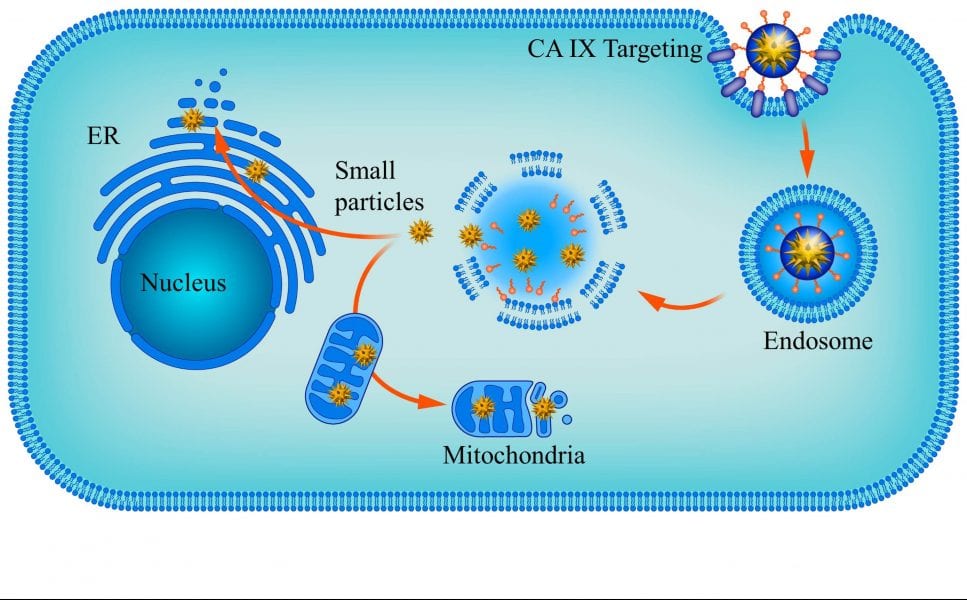Cancer is a very complex and serious disease that greatly threatens human health and challenges current medication, owing to multiple cancer specific barriers, intratumoral heterogeneity, individual differences in patients, the multiple drug resistance effect, as well as severe side effects of anticancer drugs. It is attractive and highly desirable to develop novel methodologies for cancer treatment to overcome the obstacles that arise from drug-based cancer therapy.
Hongbo Zhang, Hélder A. Santos and colleagues from University of Helsinki, Åbo Akademi University and Harvard University have applied nanotechnology to fabricate a specific nanomedicine that can fit this purpose.
Prickly shaped Zn-Doped CuO nanoparticles (NPs) were synthesized using a green sonochemical method. These NPs destroy cells through physical nanopiercing, thus avoiding many of the biological barriers set-up by the “smart” cancer cells. To achieve targeted cancer therapy, the prickly NPs were further engineered through a spermine-modified acetalated dextran (SpAcDX) coating. Furthermore, they were functionalized with VD1142, a cancer targeting ligand that acts as a carbonic anhydrase IX inhibitor, through a polyethylene glycol (PEG) linker. The final product, Prickly@SpAcDX-PEG-VD1142, efficiently and selectively killed cancer cells that overexpressed the carbonic anhydrase IX.
This novel design of nanovectors opens up new pathways for cancer targeting and therapy, while providing a new horizon for the engineering of novel anti-cancer nanomedicines. For more information, check out the paper here.

















